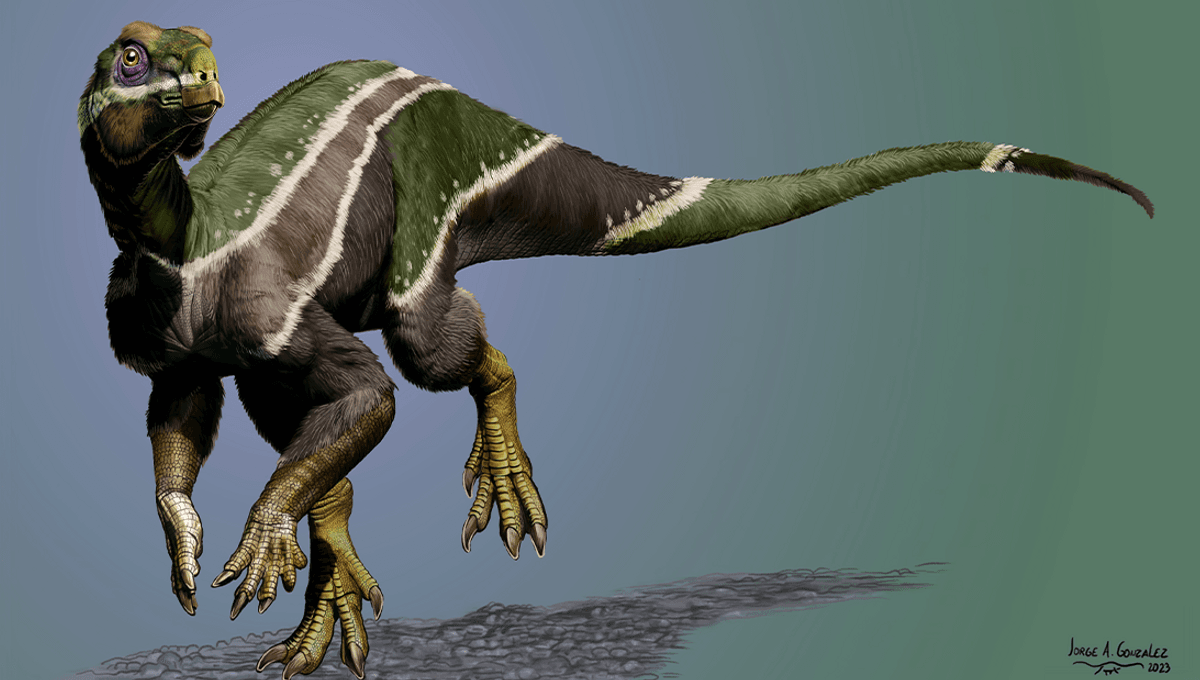
A newly discovered dinosaur in Utah is thought to have lived in a time of big environmental change and stood on the edge of a period of rapid warming on Planet Earth. Iani smithi dates back approximately 99 million years and lived in what is now Utah during the mid-Cretaceous.
Iani smithi is a special discovery for a number of reasons. The partial skeleton, which included skull, spine, and limbs, as well as jaw and teeth, was found in the Mussentuchit Member, Cedar Mountain Formation, Utah, representing not just the first discovery of this particular dinosaur species but also the first record of an ornithopod in the Late Cretaceous discovered in North America and the first Late Cretaceous rhabdodontomorph found in North America ever.
“Finding Iani was a streak of luck. We knew something like it lived in this ecosystem because isolated teeth had been collected here and there, but we weren’t expecting to stumble upon such a beautiful skeleton, especially from this time in Earth’s history. Having a nearly complete skull was invaluable for piecing the story together,” Lindsay Zanno, associate research professor at North Carolina State University, head of paleontology at the North Carolina Museum of Natural Sciences, and corresponding author of the work, said in a statement.
Despite being a dinosaur with a powerful jaw, Iani was actually thought to be a herbivorous dino who used that strong jaw and teeth to chew through fibrous plants and leaves.
After performing analysis on the skull, jaw bone, and teeth, the team were surprised to learn that their new discovery was actually a rhabdodontomorph, a clade of dinosaurs almost exclusively found in Europe and known from a small number of fossils in Australia. With this new discovery, the team thought around five clades of dinosaurs lived together in the ecosystems of North America and were present in the changing period between the Early–Late Cretaceous boundary.
“We recovered Iani as an early rhabdodontomorph, a lineage of ornithopods known almost exclusively from Europe,” Zanno said. “If Iani holds up as a rhabdodontomorph, it raises a lot of cool questions.”
Iani is named after the Roman god Janus with two faces, said to symbolize transitions. This idea is especially apt given the time period the team thinks this dinosaur lived in. The mid-Cretaceous saw a lot of changes in ecosystems caused by increasing carbon dioxide in the atmosphere and rising sea levels. This eventually led to a global temperature spike dubbed the Cretaceous Thermal Maximum. Smaller land masses meant less room for the dinosaurs to live on and it was so warm that rainforests were able to flourish at the poles.
This paved the way for the end of the reign of the larger dinosaurs, such as the giant sauropods, but we began to see the rise of early duckbills such as Parasaurolophus and Edmontosaurus, of which Iani might have been an early ancestor.
“This dinosaur stood on the precipice,” Zanno said, “able to look back at the way North American ecosystems were in the past, but close enough to see the future coming like a bullet train. I think we can all relate to that.”
The paper is published in PLOS One.
Source Link: New 99-Million-Year-Old Dinosaur Species Discovered In Utah